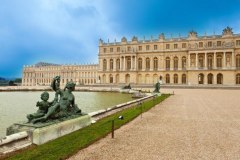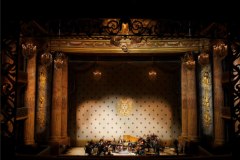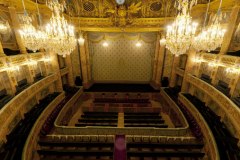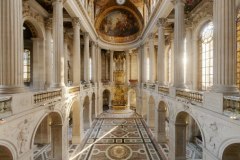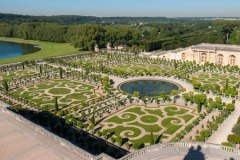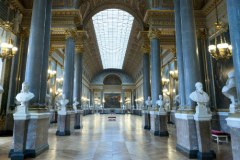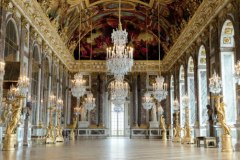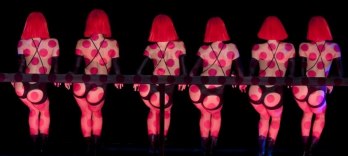Colin De Blamont: Greek And Roman Feasts
July 2024 | ||||||
|---|---|---|---|---|---|---|
Mo | Tu | We | Th | Fr | Sa | Su |
Concert in French with French and English surtitles.
From the moment it was performed in July 1723, Les fêtes grecques et romaines, François Colin de Blamont’s first opera, was a success. First, because the form of the “ballet” (which would now be called “opera-ballet”), which involves telling a different story with each “entrée” (equivalent to an act), was very much à la mode. Second, because the librettist Jean-Louis Fuzelier decided to break away from mythology and instead draw inspiration from history: “In this ballet, we brought together the most famous festivals of Antiquity, those which appeared most conducive to theatre and music,” wrote the poet. “We took care to accompany these famous festivals with illustrious names and adventures.” As such, the Alcibiade made famous by Plato's dialogues stands out at the Olympic Games (First Entrée), Mark Antony and Cleopatra celebrate the Bacchanalia (Second Entrée) and the Latin poet Tibullus courts his beloved Delia at the Saturnalia. These three festivals lend a degree of variety to the work, from the tragedy of the lover abandoned at the start of the Olympic Games to the galant tone of the Saturnalia, through the obligatory airs à boire of the Bacchanalia.
The third key to success is Colin de Blamont’s music. It falls within the same Lullist tradition as that of a certain Campra. But far from limiting himself to imitation, Blamont introduces various subtleties here and there, such as an instrumental aria arranged as a trio (with two sopranos, instead of one, and two altos) and the importance given to the solo parts in dialogue with certain singers (flute, trumpet). The recitative is also interspersed with a host of melodic “short arias” that lend it a certain charm. As Benoît Dratwicki, an expert on the composer, writes: “the music of the Fêtes grecques et romaines boasts a pure and harmonious style, but is ultimately more cosmopolitan than one might think at first glance. The declamation is certainly reminiscent of Lully, but the elegant and voluble sense of melody is very much Mouret, Bertin de La Doué or Bourgeois.”
All this won the Fêtes grecques et romaines the audience’s affection, to such an extent that, in his Réflexions d’un peintre sur l’opéra, Antoine Gautier de Montdorge describes it as “one of the loveliest ballets we know. Everyone is in agreement on the merit of the poem and the music.” The work was reprised, with “great success”, at the Académie Royale de Musique in 1733 and 1734, then at Fontainebleau in 1739, then again at the Opéra in 1741, 1753, 1762 and 1770, not to mention regional performances (Troyes, Moulins, Lyon, Nantes, Rouen, Aix-en- Provence and even Brussels). As with many operas at the time, the Fêtes grecques et romaines later fell into oblivion, familiar only to specialists. Eclipsed by Lully and Rameau, two giants of the previous and subsequent generation, Colin de Blamont, like Mouret, Campra or – in another style – Rebel and Francœur, deserves to be rediscovered for his effective and endearing style, which Valentin Tournet harnesses as he conducts the Chapelle Harmonique, against a backdrop of the Paris Olympic Games!
Program and cast
Palace of Versailles Opera Theater
Royal Opera
The Royal Opera of Versailles, located in the grounds of the Castle, one of the major opera houses.
The opening of the opera house at Versailles brought to a close a process of planning, projects and designs that had lasted for nearly a century. While the Royal Opera was finally built towards the end of the reign of Louis XV, it had been envisaged since as early as 1682, the year when his predecessor Louis XIV took up residence at Versailles. The King had commissioned Jules Hardouin-Mansart and Vigarani to draw up plans for a ballet theatre. Mansart shrewdly decided on a position at the far end of the new wing that was to be built over the coming years: the nearby reservoirs for the gardens’ fountains could be used to fight any fire that might break out, while the sloping ground on that part of the site would allow provision of the necessary technical spaces below the stage without major excavation work. So cleverly-chosen, indeed, was the planned location that none of Mansart’s successors ever questioned it.
Major building work was already under way in 1685, but was soon interrupted because of the wars and financial difficulties which beset the later part of the king’s reign. Louis XV in his turn was long put off by the huge expense involved in the project. As a result, for almost a century the French court was forced to put up with a makeshift theatre installed below the Passage des Princes. When a grand opera was required, with a large cast and complicated stage machinery, a temporary theatre would be built in the stables of the Grande Ecurie, with the entire structure being demolished once the performances were over. This temporary solution was adopted, for instance, during the celebrations of the Dauphin’s wedding in February 1745, but its inconvenience was so starkly obvious that Louis XV finally resolved to build a permanent theatre, entrusting its design to his first architect, AngeJacques Gabriel.
The process of actually building the new theatre, however, was to take over twenty years. During this lengthy period of construction Gabriel, who had studied the leading theatres of Italy, in particular Vicenza, Bologna, Parma, Modena and Turin, presented a series of different designs to his royal patron, none of which was accepted. Only in 1768, faced with the forthcoming successive marriages of his grandchildren, did the king finally give the order for work to commence. Building progressed steadily and the new opera house was completed in twenty-three months, ready for its inauguration on the 16th of May 1770, the day of the Dauphin’s marriage to the Archduchess Marie-Antoinette, with a performance of Persée by Quinault and Lully.
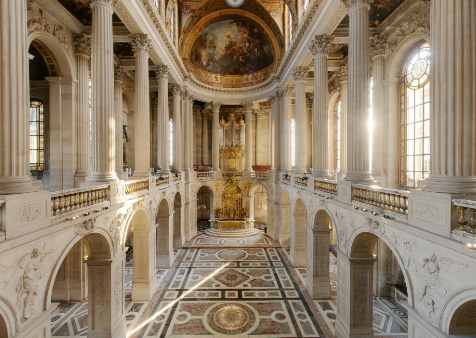
Royal Chapel
This extraordinary two-level palatine chapel was built by Jules Hardouin Mansart between 1699 and 1708 and completed by Robert de Cotte in 1710.
The paintings on the vaulted ceiling by Antoine Coypel, Charles de la Fosse and Jean Jouvenet, as well as the lavish decoration fashioned by a team of sculptors working for Louis XIV, depict a number of Old and New Testament scenes. Facing the royal gallery is the remarkable organ, created by Robert Clicquot, the King's organ builder, which was first played on Easter Sunday 1711 by François Couperin.
Even though Hardouin-Mansart did not witness the completion of the chapel, he was the one who had dictated the major aspects of the architecture and decor: a ground floor with a nave, aisles and ambulatory, and an upper floor with galleries, a harmonious combination of white and gold contrasting with the polychromatic marble floor and paintings on the vaulted ceiling, all combining to create an original space with references to both gothic architecture and baroque aesthetics.
Every day, generally at 10 a.m., the court would attend the King's mass. The King would sit in the royal gallery, surrounded by his family, while the ladies of the court would occupy the side galleries. The "officers" and the public would sit in the nave. The King would only descend to the ground floor for important religious festivals when he would take communion, for Order of the Holy Spirit ceremonies and for the baptisms and weddings of the Children of France, which were celebrated there between 1710 and 1789. Above the altar, around the Cliquot organ played by the greatest virtuosos of their age, including François Couperin, the Chapel Choir, renowned throughout Europe, would sing motets throughout the entire service, every day.
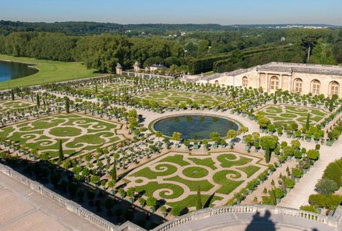
The Orangerie gardens
From May to October, orange trees and other shrubs are taken out of the Parterre Bas of the Orangerie gardens. At the center of this parterre, there is a large circular pool surrounded by six sections of lawn.
Orangerie
A great stone cathedral within a formal garden, The Orangerie is both a royal and magical place.
Built between 1684 and 1686 by Jules Hardouin-Mansart to house and protect precious trees and shrubs during the Winter, this extraordinarily large building is located beneath the parterre du Midi (South flowerbed), for which it acts as a support. Two monumental staircases, known as "les Cent Marches" (the hundred steps), frame the Orangerie's three galleries, which overlook the parterre where, during the Summer, more than 1,200 exotic trees are arranged.
Performances: Su 19 May 2024,
Performances: Th 23 May 2024,
Performances: Su 19 May 2024,
Performances: Su 26 May 2024,
Performances: Mo 20 May 2024,
Performances: Mo 20 May 2024,

 EN
EN DE
DE IT
IT FR
FR ES
ES RU
RU JP
JP RO
RO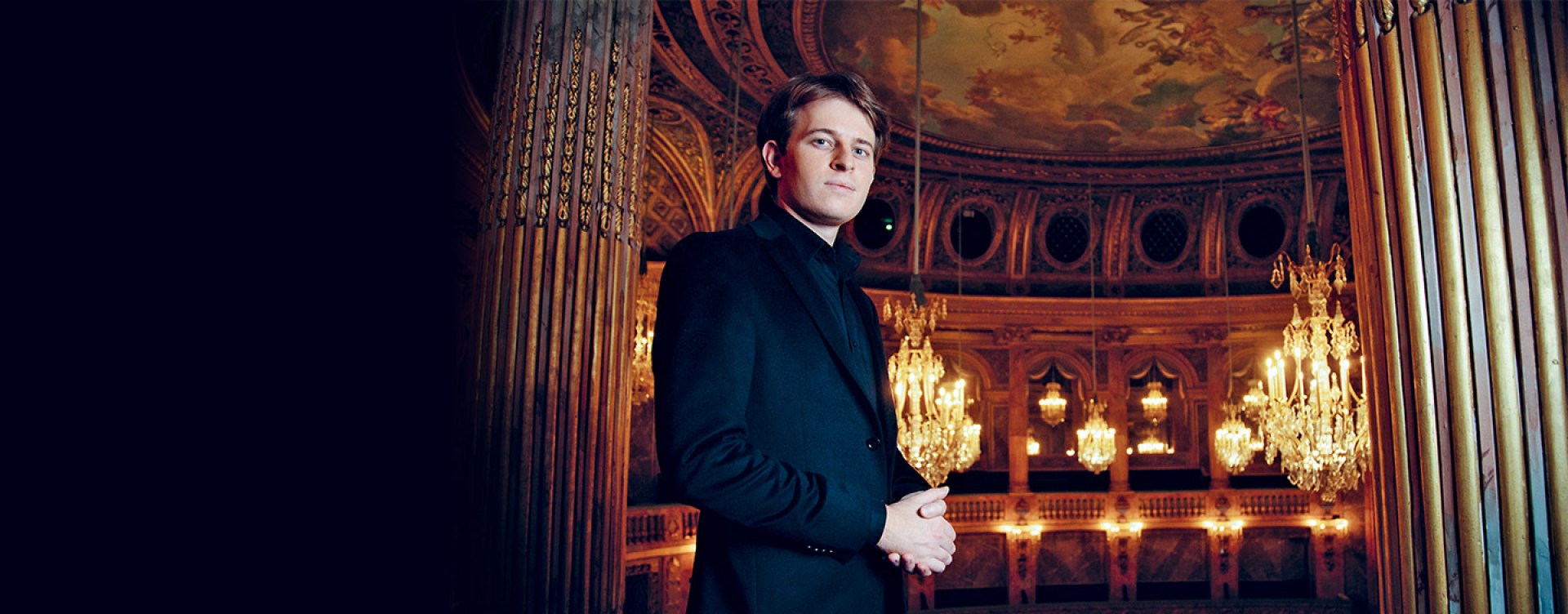
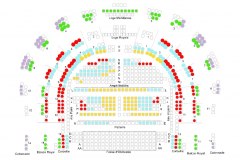 Seating plan
Seating plan 